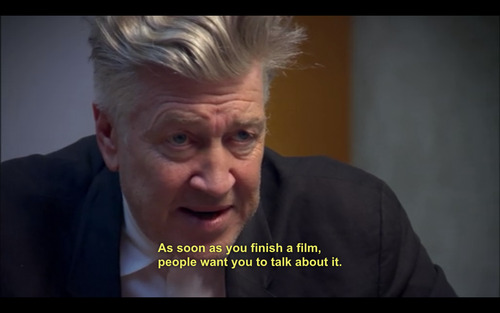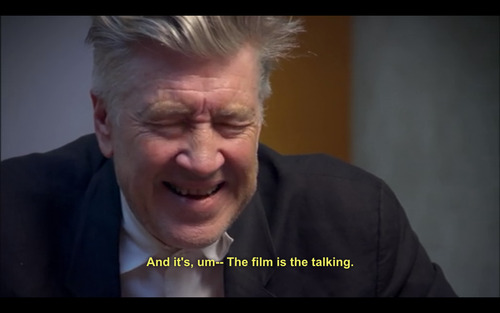#CulturalCritique
Explore tagged Tumblr posts
Text
10 Things That Make No Sense - But We Accept Anyway🤹♂️

Life is full of absurdities—things we just go along with even though they defy all logic. From tipping culture to daylight savings time, society seems to operate on a shared agreement that we’ll just smile, nod, and pretend these things are totally normal. But let’s break the silence. Here are 10 things that make absolutely no sense—but for some reason, we all accept them anyway.
1. Tipping Culture
Ah yes, tipping. Why do we pay extra for services that people are already being paid to perform? And why does the guilt hit hardest when the little iPad flips around, and the barista stares at you while you decide if making your $6 latte deserves another $2?
Why It Makes No Sense:
Why not just pay service workers a livable wage instead of making customers do financial gymnastics?
Why does tipping vary so much by country? (Ever tried tipping in Japan? Prepare for awkward refusals.)
2. Credit Scores
“Want to borrow money? First, prove you don’t need it.” The credit score system is basically the adult version of a trust fall—but instead of falling into someone’s arms, you fall into debt.
Why It Makes No Sense:
A late payment from 7 years ago can haunt you like a bad ex.
Closing a credit card hurts your score because… you’re too responsible?
The formula is so secretive that even experts just shrug and hope for the best.
3. Daylight Savings Time
Twice a year, we collectively agree to mess up everyone’s sleep schedule for no good reason. “Spring forward, fall back” sounds cute until you’re driving to work in the dark, questioning your life choices.
Why It Makes No Sense:
Originally meant to save energy, but studies show it doesn’t actually work anymore.
Farmers (often blamed for DST) don’t even like it.
Why are we still pretending this is necessary in 2025?
4. The Price of Bottled Water
We’re literally paying for water. WATER. The thing that falls from the sky and comes out of taps for (almost) free. Yet somehow, paying $3 for “artisanal spring water” in a plastic bottle feels normal.
Why It Makes No Sense:
It’s 1000x the price of tap water and often the exact same thing in a fancier package.
Why does “alkaline” or “purified” make it taste the same but sound more expensive?
5. Streaming Service Overload
“Cut the cord,” they said. “It’ll be cheaper,” they said. Now you’re subscribed to 7 different streaming platforms, paying more than cable ever cost, and half the time you can’t find what you want to watch.
Why It Makes No Sense:
Why can’t one service just have everything? (Looking at you, Disney+ and Netflix.)
The “new” season you’ve been waiting for? It’s on a platform you didn’t even know existed.
6. “Convenience Fees”
Oh, so you want me to pay extra for the convenience of doing all the work myself online? Whether it’s concert tickets or paying your bills, these fees are the ultimate slap in the face.
Why It Makes No Sense:
You’re charging me extra for using a system that saves you time and money?
How is this legal, and why are we all okay with it?
7. College Textbook Prices
College tuition is bad enough, but then they hit you with a $300 textbook… that you’ll only use once. And don’t even think about buying a used copy because this edition has two new sentences.
Why It Makes No Sense:
Most of the “new editions” are just rearranged paragraphs.
Why do professors require books they wrote themselves? Double-dipping much?
8. “Shrinkflation”
You’re not imagining it—your favorite snacks really are smaller than they used to be. And no, it’s not because your hands got bigger. Shrinkflation is when companies reduce product sizes but keep the price the same (or higher).
Why It Makes No Sense:
Why are chip bags 70% air?
How did a “family-sized” box of cereal become single-serve?
9. Influencer Culture
We used to idolize astronauts and scientists. Now, we’re giving millions of followers to people whose biggest accomplishment is being hot on Instagram. And somehow, they’re the ones living in mansions while the rest of us struggle to pay rent.
Why It Makes No Sense:
Why do we buy $40 candles just because someone we don’t know said it “smells like confidence”?
Why do influencers get free stuff… even though they can already afford it?
10. Luxury Brands Selling Ugly Stuff
Why are we spending thousands of dollars on stuff that looks like it came from a middle school art project? Balenciaga sells $1,500 trash bags. Gucci made dirty sneakers that cost $870. And Crocs, well… they just exist.
Why It Makes No Sense:
The more absurd it looks, the higher the price tag.
Who decided that expensive = fashionable?

Conclusion
We’re all guilty of going along with things that make zero sense because, well, that’s just how the world works. But maybe it’s time to start asking questions—or at least laughing at the absurdity of it all.
What’s something you’ve accepted as “normal” even though it makes no sense? Let’s hear it in the comments!
🔥 Like what you see? Don’t just hoard it—Reblog it. Spread the gospel. Amplify the chaos.
📌 Follow for more—I drop this kind of gold daily. Don’t be the last one to catch on.
🔁 REBLOGGING IS FREE and legally required* (*not really, but spiritually, yes).
#Humor#memes#news#world news#employment#social media#youth#humor#youtube#jokes#CorporateLifeSucks#tiktok#career#trends#funny stuff#funny shit#MillennialStruggles#funny memes#TruthBombs#SocialCommentary#ModernCulture#RelatableContent#MoralOutrage#CulturalCritique#SocialCritique#RelatableTrash#funny post#lol#haha#societyandculture
81 notes
·
View notes
Text
Unmasking the Lure of Perfection
Society's Seductive Trap
In our world today, there's a relentless pursuit of perfection, heavily influenced by society's rigid standards. It's a world where women often resort to plastic surgery and makeup, not merely as expressions of personal style, but as a way to conform to societal expectations of beauty. They are driven by a deep-seated belief that these enhancements will make them more appealing, or perhaps correct perceived inadequacies instilled by societal norms.
Men are not immune to this phenomenon. The pursuit of wealth and material possessions often stems from the same root - a desire to be more appealing, to fit into a societal hierarchy that equates success with monetary wealth and luxurious belongings. This pursuit is not just about personal satisfaction but about gaining access to circles and opportunities otherwise out of reach.
But let's pause and ponder - who sets these standards? Why do these hierarchical systems exist at all? It's a clever strategy, really. When society convinces individuals that they need certain things to be accepted or successful, it becomes all too easy to manipulate their desires and actions. This pursuit of societal approval has turned into a lucrative commodity for those in control, and they spare no effort in maintaining this seductive, almost hypnotic hold over people.
We're living in a world ensnared by these illusions of perfection, trapped in a cycle that benefits a select few while the rest strive to fit into a mold that might not even align with their true selves. It's high time we question these norms and break free from this seductive trap. Let's redefine beauty and success on our own terms. After all, true freedom lies in living authentically, not in chasing shadows of societal approval.
#SocietalStandards#RedefiningBeauty#BreakingStereotypes#AuthenticLiving#QuestioningNorms#BeyondMaterialism#TrueSelfWorth#CulturalCritique#Empowerment#SelfAcceptance#InnerBeauty#MindfulLiving#ChallengingNorms#PerceptionVsReality#SelfLoveJourney#ConsciousChoices#SocietalPressure#LifeBeyondLabels#RedefiningSuccess#BreakingIllusions#introvert#writing#writerscommunity#writerscorner#writerslife#writers on tumblr
14 notes
·
View notes
Text

History and capitalism were dating. History was seeing other people, so capitalism really tried to look like the best of all possible worlds. Then they got married, and capitalism stopped trying so hard. And then history said, “Remember my vow, ’til death do us part? Well, do you think I was kidding, or not?
McKenzie Wark, "Raving" 2023 pg: @liminalmindcore
#HistoryAndCapitalism#McKenzieWark#Raving2023#Philosophy#SocialCommentary#Capitalism#HistoricalNarrative#ThoughtProvoking#Literature#ContemporaryWriting#Quotes#Books#Society#TumblrLit#ReadingList#CulturalCritique#rave#urbex#urbexphotography#urbexexploration#urbexplaces#abandoned#abandoned buildings#lost places#mckenzie wark
3 notes
·
View notes
Text
Capitalism and its Hobbies
Have you ever noticed how capitalism has a tendency to corrupt and misconstrue, among many other things, hobbies? What starts as a source of fun and relaxation in our free time, becomes an investment in our own well-being. You're are forced to justify spending your hard-earned cash on what you love, and if it by some miracle it pays off, oh then you better watch out. It might just evolve into a side hustle, encroaching on any other personal time that you may have left. Soon, before you even know it, it's a second job, and eventually, our main source of income. Finally, back to square one, seeking a new hobby, a new investment, as our old one slowly consumes our life.
#Capitalism#Hobbies#SideHustle#WorkLifeBalance#PersonalGrowth#WellBeing#LeisureTime#Investment#TimeManagement#FinancialFreedom#Mindfulness#SelfCare#EconomicPressure#CareerGrowth#LifeBalance#PassionProjects#StressManagement#Hobbyist#LeisureActivities#WorkLifeConflict#PersonalDevelopment#MoneyManagement#Entrepreneurship#CreativeExpression#SocialImpact#Consumerism#LivingWell#CulturalCritique#marxism#communism
2 notes
·
View notes
Text
"The successful people are the ones who keep on going regardless of what is being thrown at them"

Dr. Jordan Peterson is a Canadian clinical psychologist.
#JordanPeterson#JP#12RulesForLife#Psychology#SelfHelp#Philosophy#FreeSpeech#CulturalCritique#Psychologist#PoliticalScience#IdentityPolitics#Individualism#Existentialism#SelfAuthoring#ClinicalPsychology#IntellectualDarkWeb#Debate#SocialIssues#PersonalDevelopment#ModernThinkers#quoteoftheday#today on tumblr
4 notes
·
View notes
Text
Misery loves company, and people will seek you out to infect you with it so they're not alone.

#LifeIsWeird#AbsurdRealities#Humor#CulturalCritique#RelatableContent#TruthBombs#SocialCritique#MillennialStruggles#ModernCulture#trends#news#world news#SocialCommentary#please share#ReflectionRegret#funny post#funny memes#funny stuff#funny shit#humor#jokes#memes#lol#haha#societyandculture#creative writing#writers#writing#science#humans are weird
48K notes
·
View notes
Text
Why indie sucks?
Because it feels like it lacks essence. It’s like a rock stripped of its ontology—deprived of force, unable to transcend the ennui it claims to oppose. Its minimalism doesn’t dialectically challenge, doesn’t engage in praxis, doesn’t descend into the phenomenology of real struggle. Instead, it retreats behind an aesthetic facade that aspires to sophistication but reveals itself as hollow, disconnected from any authentic being-in-the-world. It’s the ideal background noise for a generation that confuses contemplative inertia with critical thought. And therein lies its gravest failure: it’s not just incapable of disrupting; it doesn’t even know how to dissent. It presents itself to the world as a sterile murmur, too preoccupied with preserving its curated simulacrum to risk any real confrontation.
Indie, as a cultural phenomenon, reflects a more profound issue than its music. It mirrors a privileged class that, under the guise of alterity, replicates structures of exclusion and domination. It’s not merely about the sanitized chords or the repetitive lyrical fixation—perpetually orbiting the existential vacuum of “I was abandoned; I suffer.” What’s most disconcerting is the underlying ideological framework: a scene dominated by individuals who trivialize systemic issues while perpetuating elitist and ethically questionable practices.
Adorno, in his critique of mass culture, argued that cultural products often disguise social hierarchies under the illusion of autonomy. Indie exemplifies this perfectly: a genre marketed as genuine and accessible, but operating as an exclusive sphere, inhabited by those who perform sensitivity while constructing invisible barriers of privilege. It’s no stretch to see how this dynamic extends into more insidious territories: from the normalization of symbolic violence to the tacit enabling of explicit abuses, all obscured under the veil of artistic solidarity.
The problem isn’t minimalism itself; it’s how it’s deployed. In indie, the minimal lacks phenomenological depth. It doesn’t open horizons or create dialectical tension; it remains static, a posture devoid of movement or becoming. It’s a genre that aspires to profundity but remains bound by superficiality, as if it fears the rupture that comes with engaging the Real. That’s why I say it lacks substance: it’s bereft of the visceral intensity that transforms music into an act of resistance or an assertion of vital existence.
Ultimately, indie doesn’t disturb. It doesn’t negate, doesn’t transform, doesn’t demand a reckoning. Its aesthetic of fragility and restraint isn’t a revolutionary gesture but a retreat into passivity, a refusal to confront the contradictions of existence. Perhaps that’s why it feels so vacuous—because in its obsessive pursuit of differentiation, it becomes the most comfortably assimilated expression of all.
#IndieMusic#RockCriticism#MinimalistMusic#AlternativeCulture#PhilosophyOfMusic#ElitismInMusic#PassivityInMusic#MusicAesthetics#CulturalRevolution#CulturalCritique#MusicAndSociety#Adorno#IndieCritique#SocialCriticism#ContemporaryMusic
0 notes
Text
He-Man Tried to Trick Us: Skeletor Was Swole as F☰☰k Too

Let’s talk about the biggest lie our childhoods ever served us, right up there with Santa Claus and the tooth fairy: the idea that Skeletor wasn’t an absolute gym beast. For years, He-Man was out here flexing his pecs and shouting, “I HAVE THE POWER!” Meanwhile, Skeletor was lurking in Snake Mountain, shredded as hell, rocking a villain aesthetic that could easily grace the cover of Evil Bodybuilder Weekly.
But no, the show insisted on portraying Skeletor as some goofy cackling skeleton, as if we weren’t all noticing the dude’s traps were literally eating his hood.
1. Skeletor’s Swole Anatomy
First off, can we talk about Skeletor’s build?
Shoulders for Days: That man could shoulder-press Castle Grayskull if he wanted to.
Biceps of Doom: Look at his staff. That thing isn’t lightweight. You don’t carry a ram’s skull around unless your arm days are legit.
Abs Forever: You could wash laundry on that torso. No fat, no fluff, just pure skeletal gains.
2. The Double Standard: He-Man vs. Skeletor
Here’s the thing: He-Man got all the glory for being the “hero,” but let’s be real—Skeletor was out there putting in just as much work, if not more.
He-Man had the Sword of Power, literal magic doing half the heavy lifting.
Skeletor? Pure dedication. He didn’t need magical transformations—he stayed yoked year-round!
And let’s not forget Skeletor’s aesthetic: He rocked a purple and blue combo with confidence. You try walking into a gym looking like a neon villain and still commanding respect.
3. Skeletor: The Ultimate Gym Inspiration
Skeletor deserves credit where it’s due. He’s the ultimate testament to grinding through adversity:
No Skin, No Problem: Imagine lifting weights with exposed bone face. That’s some next-level grit.
Hated by Everyone: He didn’t need a cheering squad—just sheer spite and a refusal to let He-Man steal the spotlight.
Dedication to the Look: Even when losing, Skeletor never let himself go. Every episode? Still jacked, still fabulous.
Skeletor didn’t skip leg day. His quads were beyond what a mortal man could ever achieve...naturally. I'm talking to you, Man-At-Arms.
4. The Real Lesson from Skeletor
Here’s what He-Man didn’t want you to know:
You don’t need to win every battle to stay legendary.
Villains can be role models too—especially when they’re unapologetically themselves.
Sometimes the real “power” isn’t a sword or a catchphrase—it’s sticking to your gym routine, even when you’re surrounded by incompetent minions like Beast Man.

Stop Sleeping on Skeletor
It’s time we rewrite the narrative. Skeletor wasn’t just He-Man’s foil; he was the real MVP of muscle culture. Next time someone calls you “the bad guy,” just remember: villains can be swole as f--k too.
Love calling out childhood lies and dropping truth bombs? Follow The Most Humble Blog for more unapologetic takes and hilariously sharp observations.
#LifeIsWeird#AbsurdRealities#Humor#CulturalCritique#RelatableContent#TruthBombs#SocialCritique#ModernCulture#fitness#please share#ReflectionRegret#RelatableTrash#funny post#funny memes#funny stuff#funny shit#humor#jokes#memes#lol#haha#societyandculture#share#saturdaymorning#gymlife#gym#gym body#gymmotivation#gymrat#working out
56 notes
·
View notes
Photo
Nothing like someone turning to you, facing away from a movie playing on screen, in order to ask you questions bout the movie... playing on screen!..RIP to a great.


Great Directors, 2009 (dir. Angela Ismailos)
#LifeIsWeird#AbsurdRealities#Humor#CulturalCritique#RelatableContent#TruthBombs#SocialCritique#MillennialStruggles#ModernCulture#trends#SocialCommentary#please share#ReflectionRegret#funny post#funny memes#funny stuff#funny shit#humor#jokes#memes#lol#haha#societyandculture#creative writing#writers#writing#science#humans are weird
12K notes
·
View notes
Text



Art History and AI: Kitsch Art, Blue Boy and Velvet Elvis
Kitsch art has significantly influenced the fine art world by challenging traditional boundaries between high and low culture. Initially perceived as a negative connotation for art deemed overly sentimental or superficial, kitsch has been embraced by artists as a means of democratizing art appreciation. Movements such as Pop Art, which arose during the mid-20th century, engaged with kitsch aesthetics to critique consumer culture while celebrating mass-produced imagery. This shift has led to a reevaluation of what constitutes "worthy" art, allowing for an inclusive dialogue that recognizes the value of popular aesthetics alongside avant-garde approaches.
The connection between decorative art and kitsch art is particularly evident through the popularity of iconic paintings such as Blue Boy by Thomas Gainsborough and Pinkie by Thomas Lawrence. Both works have become symbols of kitsch in decorative art, inspiring mass-produced merchandise ranging from cookie tins to figurines that captivate a wide audience. Similarly, the velvet oil paintings of Elvis Presley serve as quintessential examples of kitsch, integrating elements of nostalgia and camp. These easily recognizable images cater to consumers' desires for accessible art, bridging the gap between fine art and popular culture while eliciting both admiration and amusement.
LGBTQ artists have found a unique space within kitsch art, using its aesthetics to explore themes of identity, sexuality, and community. Artists like Keith Haring,Tom of Finland and Andy Warhol have famously employed kitsch to express the complexities of queer experiences, utilizing vibrant colors and camp sensibilities as vehicles for social commentary. Kitsch serves as a tool for subversion, enabling these artists to reclaim narratives that have often been marginalized, while creating accessible and relatable works that resonate with diverse audiences. This relationship between kitsch and LGBTQ art underscores the fluidity of artistic expression and the power of aesthetics to challenge societal norms.
Generative AI creators can incorporate kitsch elements into their works by leveraging algorithms that mimic the whimsical and exaggerated qualities characteristic of kitsch art. By utilizing datasets of pop cultural icons, whimsical designs, and nostalgic imagery, AI can generate new compositions that celebrate the humor and sentimentality associated with kitsch. Additionally, artists can experiment with blending highbrow aesthetics against the backdrop of kitsch, creating juxtaposed visuals that provoke thought and invite interaction. This synthesis allows creators to engage with contemporary discussions about art and technology while embracing humor and familiarity within their work.
“Updated Blue Boy”, “Updated Pinkie” and “Tom of Finland inspired Oil Velvet
#KitschArt#PopArt#BlueBoy#Pinkie#LGBTQArt#GenerativeAI#CreativeProcess#ArtInspiration#CampAesthetics#VelvetArt#CulturalCritique#AestheticExploration#InclusiveArt#ArtRevolution#KitschCulture
0 notes
Text
Nihil sub sole novum

youtube
From the End of the Beginning of this year, last year, most years, every year. Ah, a three-year odyssey, where time is less of a straight line and more of a spiral. If anything, these past few years have been a masterclass in the ironically absurd. Between the incompetence of systems that promise salvation (insurance, healthcare, politics, religion) and the existential dreariness of a body that stubbornly clings to life despite all odds, the journey feels less like progress and more like a forced march toward an inevitable, unremarkable end. One cannot help but wonder—has anything truly changed, or are we simply treading water in the flood of our own making? Our current way of life, metaphorical and literal, serves as a backdrop to this existential performative dance. The wreckage left in its wake mirrors not just the physical destruction but the internal chaos of living in an age where security is fleeting, satisfaction a myth, and self-importance via social media dominates. The grand dream of perfection—whether in homes, bodies, relationships, or ideologies—is swiftly eroding, leaving behind the stench of human vulnerability. Yet, in the face of this, there's a curious resignation. We become more connected than ever before while we are more disconnected than ever before. Defies logic, but here we are. The repairs are slow, the bills pile up, but at least there's a sense of grim humor in the absurdity of it all. One adapts, kicks rocks barefoot, to the constant erosion, which, in its own right, becomes a form of rebellion against the very systems that demand our submission.
The steady march of time continues, dragging more medical frustrations, loss, and the weary realization that life is as much about enduring as it is about achieving anything meaningful. Health problems, relationships, and even political ideologies become so much noise against the backdrop of the real question: What’s the Point? So, as the years accumulate, what is left to do but press forward, not in hope or optimism, but because time, relentless in its ticking, doesn’t really offer an alternative. The absurdity, after all, is the only thing that’s truly constant. Is your life a carefully constructed narrative, or are you simply improvising a tragic farce with occasional comedic beats? A theater of existence through a lens. From hurricanes that rip apart our homes and finances to the inevitable decay of the human body. I am always pondering the inherent futility of attempting to control the uncontrollable. Existential dilemmas emerge from mundane struggles: rebuilding without the tools or even a blueprint for the tools becomes a symbol of a compromised life in a dream where inflation ensures the rich get richer and the rest get a crash course in survival. Oh, that isn’t a dream. That’s been a reality for most of us. There’s a sharp turn into the familiar friend of entropy. Here lies the ironic absurdity of caregiving: futile efforts to prolong a life that ultimately evaporates into oblivion. Yet, I welcome musings of AI, conceptual horror, and the darkly comedic nature of politics, whether life has meaning, but whether meaning itself is the cruelest joke of all. They say “live and learn,” but if one hasn’t learned, did they ever live? Whenever I heard a “saying,” and it starts with “they say.” Who the hell are “they?” It makes me want to hunt down, “they,” slap them in the head.
Welcome in social media, the internet’s great experiment in collective brain rot. What begins as communication to gain different perspectives turns into tribalism in online spaces evolving into unhealthy internet subcultures, where trolls and influencers battle for supremacy in a digital coliseum of irrelevance. Internet idealism now reduced to a sandbox for the trivial and the vindictive. Does it even matter whether a troll, a cultist or elitist wins the argument if the platform itself is a dumpster fire of collective word vomit from narcissists? Granted elitists wouldn’t be on social media all that much. They are too busy ‘eliting’ themselves to more monies. When you have loads of cash, does one even want or need social media? Woke or unwoke, left or right, preaching the Lord’s name or not; these labels serve merely as masks for the fear that underpins human existence: the terror of being forgotten in a universe that never cared in the first place. The message—a searing reminder that the more we “connect,” the more we expose the gaping void within ourselves while disconnecting from the people that are actually in our reality. We try to venture out. One can only wave their hands so much to get someone else’s attention. If they choose to ignore that and you know deep down you were forward with that concept of communication. It isn’t on you to care. You attempted, they played dumb. Why would you accept that from any situation or person? The floodwaters of nature are matched only by the flood of systemic incompetence, with insurance premiums rising as fast as the costs of rebuilding. The house, much like life itself, becomes a metaphor for the disillusionment we all feel: repairs are never as simple as they seem, and some losses—like the pool cage and later the entire pool lanai—are just too damn expensive to replace. Yet, here we are and instead of descending into despair, we just realize life goes on, even when the dream moves slowly towards a singularity. You can’t save everything, but you can at least salvage the absurdity of it all, laugh and curse the fake God in the sky.
These reflections are framed not by sorrow, but by existential absurdism: does it matter? Does the universe even care a blip within a blip within a blip within an ocean, within a glass, on a planet that was swallowed by a giant space whale even care? In a world where the system is rigged and the body betrays you, the only thing left to do is keep moving forward—until the final, inevitable reset. Whether sudden or prolonged, life and the death of that life is just the final joke in a single frame of reference full of bad punchlines.
With that said 2025 is going to be a little different, at least in how I attack my writings. I have been so busy with some other things that I haven’t been able as much to work on my own stuff. I am slowly but actively taking all my blogs and converting them to audio/video presentations. They are not podcasts. I am just taking the written blogs or essays using an AI voiceover to read it with some sort of video attached to it. I like the audio spectrum. It’s like a "visualizer" for audio that allows you to see a visual for the sound, making it a neat little creative tool. I will be producing a real music video for the band I work with. Going low tech with that as well. Going for a 90s grunge or metal vibe of the time. I have a lot of audiobooks to get through this year. Many that deal with black hole fiction and stories revolving around time dilation. I want to put out a few short-stories this year as well and work on something bigger. As of right now I do not have a real writing schedule like I usually work from, but my next essay will be on labels. What they are and why they are important. We have had labels longer than sugar. I will probably write a lot of reviews on these science fiction books. The more of these more existential fictions the more it will draw me into thinking about reality and how I want to formulate my own stories. I got some solid ideas that I feel like I want to talk about. I think short-stories with expansion in mind is the best way for my brain to operate when writing. I will also continue to doing tech-style essays on some of the odd computer stuff I tend to tackle. So yeah, 2025 is gearing up. I am glad I am able to think about this in a healthy place in my brain and not have too many delusions of grandeur.
As I look ahead to 2025, the creative landscape feels like a vast, uncharted universe—full of potential, ready for exploration. Whether it’s blending audio-visual projects, diving into the abstract depths of existential fiction, or tackling the nuanced power of labels, the journey is ongoing. But, like a supernova, I’m aware that growth and creation are processes of expansion and contraction, marked by moments of clarity amidst chaos. It’s a balance between the infinite and the finite—an ever-evolving dance of ideas and reality. Here’s to the art of becoming.
Nihil sub sole novum Latin for (Nothing new under the sun) by David-Angelo Mineo 12/31/2024 1,467 Words
#nihilsubsolenovum#existentialism#absurdism#socialmedia#cosmicjoke#existentialcrisis#existentialfiction#writinggoals#2025#blackholes#timedilation#sciencefiction#philosophicalwriting#caregivingstruggles#systemicfailure#rebuildinglife#culturalcritique#politicalsatire#meaningoflife#existentialhumor#futility#humancondition#entropy#existentialabsurdity#labelsandidentity#futurenytimesbestseller#writersblog#writerswrite#writers#writerscommunity
0 notes
Text


















Conceptual Feed, April 2020
inspired by the transformative works of Cindy Sherman, this series explores identity and performance, creating characters through self-photography and lending my body to their narratives.
Cindy Sherman is an American artist renowned for her conceptual self-portraits. Through meticulous costume, makeup, and photography, she transforms herself into various personas, questioning identity, gender, and representation in contemporary culture. Her work often blurs the lines between fiction and reality, making her one of the most influential figures in modern art.
#conceptualfeed#identityart#performativeart#selfportraiture#artandidentity#modernportraits#artandrepresentation#contemporaryconcepts#culturalcritique#photographyasart#artistasubject#cindy sherman
0 notes
Text
Interesting...
Cats (2019) is worse than Doctor Who (2006) even though the show was made with the budget of a crisp packet

#trends#TheMostHumbleBlog#Satire#BoldTakes#Humor#CulturalCommentary#TruthBombs#AntiWoke#news#world news#ModernCulture#SocialCommentary#CulturalCritique#EchoChamberCulture#MoralOutrage#please share#ReflectionRegret#share#blogging#blog#microblog#tumblog#blog post#political news#creature feature#fx#film
94K notes
·
View notes
Text
Magic, Wicked, and the Backlash
Magic—a word that sparks both awe and unease. Despite its universal appeal across cultures and centuries, magic remains a taboo topic in the United States. Why does this land of freedom and self-expression react so strongly? The discomfort arises when someone starts talking about wands, potions, and a little abracadabra. Let’s dig into the complicated relationship America has with magic and why…
#Censorship#ChristianityAndCinema#ComplexMorality#ControversialFilms#CriticalThinking#CulturalCritique#FaithVsFantasy#FantasyMovies#FilmDebate#GoodVsEvil#Hollywood#MoralRelativism#MovieBans#MovieReview#PopCultureAnalysis#ReligiousPerspectives#TheologyInFilm#ThoughtProvokingStories#Wicked
0 notes
Text
Are We in a War Against Awareness and Destruction?
Join us as we delve into the dark truths of society through the eyes of Speaker_02. This thought-provoking video confronts uncomfortable realities, highlighting the destruction around us and igniting awareness. Experience a powerful narrative that challenges perceptions and inspires change. #SocietalIssues #Awareness #Destruction #ThoughtProvoking #ArtAndMusic #MKUltra #Speaker02…
#ArtAndMusic#Awareness#CulturalCritique#DarkNarratives#Destruction#InspireChange#MKUltra#SocietalIssues#Speaker02#ThoughtProvoking
0 notes
Text
Consumerism and the American Dream
How Communitarianism Offers a Better Path
I identify most with communitarianism. Communitarian cultures prioritize the collective good over individual desires, emphasizing harmony and cohesion within society. While Thought Co. states that "Communitarianism is often considered the opposite of liberalism," (Longley, 2020) modern liberalism, particularly in leftist communities, seeks a balance that allows for self-expression while addressing societal needs to exist peacefully. In contrast, individualist cultures hold self-reliance and personal success in high regard, even if it comes at the expense of the broader community.
In communitarian societies, individuals are considered integral parts of a larger social construct, expected to contribute to the community’s well-being through social, family, and civic responsibilities. Individualist cultures, however, place the highest value on individual rights—such as freedom of choice, speech, and action—even when these rights conflict with the common good. As described by both Thought Co. and the Foundation for Economic Education, classical liberalism embodies these principles, which became the foundation of "liberal democracies" in the free world.
“These individualistic principles became the pillars of the social institutions that now characterize what we call the “free world” (hence the term “liberal” democracies).” (Carroll & Sanchez, 2022)
While individualists believe society exists to support personal freedom and autonomy, communitarians believe in acting in ways that benefit the group. Communitarianism does not reject individual rights like freedom of speech and action. Still, it insists that these rights should not supersede the safety and well-being of the community.
In today’s American society, particularly in Black communities and in the broader cultural context, individualism dominates. This aligns with our focus on capitalism and the "American Dream." While Etzioni points out that tightly-knit communities can hinder individuality and creativity, we've moved beyond that. We now operate in a society where, unless something directly affects us, we often choose not to engage—even within our families. This has led to a culture that breeds widespread unhappiness. One critic notes, "...Our idea of happiness has been transformed to make us better consumers... these values have been co-opted and used to normalize a deeply unjust and undesirable situation." (Illing, 2018)
References
Carroll, P., & Sanchez, D. (2022, July 2). Individualism: A Deeply American Philosophy. FEE.org. Retrieved October 6, 2024, from https://fee.org/resources/individualism-a-deeply-american-philosophy/
Etzioni, A. (2002, May). "The Good Society" by Amitai Etzioni. Seattle University School of Law Digital Commons. Retrieved October 6, 2024, from https://digitalcommons.law.seattleu.edu/sjsj/vol1/iss1/7?utm_source=digitalcommons.law.seattleu.edu%2Fsjsj%2Fvol1%2Fiss1%2F7&utm_medium=PDF&utm_campaign=PDFCoverPages
Illing, S. (2018, September 4). A history of happiness explains why capitalism makes us feel empty inside. Vox. Retrieved October 6, 2024, from https://www.vox.com/science-and-health/2018/9/4/17759590/happiness-fantasy-capitalism-culture-carl-cederstrom
Longley, R. (2020, June 29). What Is Communitarianism? Definition and Main Theorists. ThoughtCo. Retrieved October 6, 2024, from https://www.thoughtco.com/communitarianism-definition-and-theories-5070063
#AmericanDream#Consumerism#Communitarianism#CollectiveGood#SocialJustice#EconomicJustice#CapitalismCritique#SocialResponsibility#IndividualismVsCommunity#CivicEngagement#SocialCapital#LiberalismDebate#EconomicInequality#SocialTheory#RethinkHappiness#CulturalCritique#SocialChange#CommunityMatters#EthicalLiving#PhilosophyInPractice
0 notes